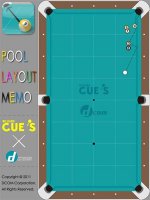Hey Joey, I appreciate you adding some of my tips to your list, but you paraphrased a couple so I wanted to clear up a couple points.
#42 (you have 2 of them.

) - One of the reasons I said even good to intermediate players miss wired shots is because you missed one. You extrapolated and wrote "for balls that are frozen together or are just pointed to the pocket" and that is not the only wired balls I meant. Wired balls can be perpendicular to the pocket, with the tangent line going to the pocket. They can have a slight gap, the tangent line can be above the pocket and still go by using draw, you can combo another ball into them so they go, etc.
And just because the balls point at the pocket in a straight line do not always mean they're on, and conversely, balls don't have to point at the pocket to be on, so that's why I said some don't even look like they're on.
Also, if your opponent's balls are ON in the same manner, I wouldn't say to make sure and nudge them just for the sake of messing them up, but IF the opportunity came up as a result of a shot I'm playing (perhaps using the cluster as a stopper) then it works. My primary goal is offense, and hopefully, I've run out before they can use theirs or perhaps they don't even see it, as is the case in many instances.
#43. You added at opposite ends of the table, which is good strategy too, but I was more talking about having 2 balls on the long rails on opposite sides of the table, placed in roughly the same spot, like the 2nd diamond from the corner pockets. Hard to explain without a diagram.
You used my point 13 without referencing point 12 because it is now your point 43.
Just wanted to clarify a few things and it may be better just to use my whole quote without paraphrasing. Thanks Joey!
